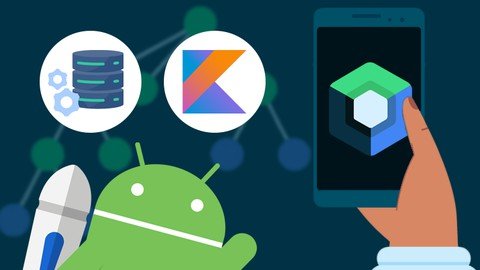
Published 9/2023
MP4 | Video: h264, 1280×720 | Audio: AAC, 44.1 KHz
Language: English | Size: 6.06 GB | Duration: 11h 48m
A full app development cycle by using leading tools and a scalable, testable and robust architecture
What you’ll learn
Create an app from scratch by using the best tools available
Organise and Architect your codebase according to best practices such as MVVM and Clean Architecture
Operate with local and remote data sources and how to combine them
Split your app into feature modules
Migrate to compose and variants of it
Write a beautiful and concise code
Requirements
Beginner level, base Kotlin and Android Development knowledge
Description
Hello and welcome to my Android Development Architecture course!In this course, we’ll build an app from scratch that displays an infinite list of movies that load lazily in blocks. We will implement a search function with real-time API calls and the ability to save movies to a local database in two different ways.We’ll first create the screens by using the old layouts, then I’ll show you how to migrate to Compose in simple steps. You might be wondering: why not do this directly in Compose? Well, the answer is simple. Compose is a fairly new technology and not all projects have been migrated yet. You never know what kind of projects you’ll end up with. If you understand both systems and work with them as a professional, you will stand out from the crowd. A big advantage is that you can organize and design the migration yourself within your team!But the most important thing about this app is not its functionality or its design. But how do we architect it and that’s why we will use tools that are proven to work best for Android development.Here is a list of the technologies we will use:Retrofit – One of the main network call librariesRoom – Google-recommended library for local databasesKoin – The pragmatic Kotlin Dependency Injection frameworkCoil – to load network imagesGson – Json converter for API responsesKotlin Flow and Coroutines – Asynchronous or non-blocking programming as an important part of the development landscape. Ktlint – kotlin-linterAnd also the Jetpack libraries offered by Google:Pagination – for simple and infinite data loadingNavigation – for easy navigation between screensMaterials design – design frameworkCompose – the latest Android UI frameworkThey are all configured and packaged in the standard MVVM or Model-View-ViewModel and Clean Architecture. You’ll end up with 2 base projects, first with legacy xml layouting and second with the newest Compose technology. And because we’ll be using TMDB service, after this course you’ll have to possibility to develop your own ideas on top of it and thus, practice the fresh knowledge you just got!This course is intended to be continually updated, meaning new modules will be added over time, increasing the price, but if you have already purchased the course you will not have to pay extra. And there’s always a 30-day money back guarantee if you decide to issue a refund!
Overview
Section 1: Introduction
Lecture 1 Important! Before you start.
Lecture 2 Android Studio setup (tools, plugins and cosmetics)
Lecture 3 Get the base project and overview
Section 2: Base app setup and Architecture Introduction
Lecture 4 Packages – How to organise your files and not get lost
Lecture 5 Fragments is all you need! Navigation and delegate your ViewBindings
Lecture 6 ViewModels – what are they and how to use them
Lecture 7 Retrofit – How to get data from services
Lecture 8 RecyclerView – The Good, the bad and the ugly (How to use it right way)
Lecture 9 Pagination – Can you load all the movies in one app ?
Lecture 10 Clean Architecture – What is a UseCase?
Section 3: Lets develop some features, shall we ?
Lecture 11 Search – Find me my favourite movie!
Lecture 12 Details – This movie looks nice, I wanna know more!
Lecture 13 Room – Local Database setup
Lecture 14 Saved – I like this movie! How can I save it?
Lecture 15 Modules – What is a Feature Module and how to set it up
Section 4: What is Compose and how to completely migrate to it
Lecture 16 Theming in Compose
Lecture 17 Creating your first components
Lecture 18 Compose your first screen
Lecture 19 Compose Search and Saved screens
Lecture 20 Compose Details screen
Lecture 21 How to navigate in Compose ?
Lecture 22 How can we improve Compose Navigation ?
Beginner Android Developers who want to create apps the right way
Password/解压密码www.tbtos.com
转载请注明:0daytown » Android Developer = Compose + Mvvm + Clean Architecture